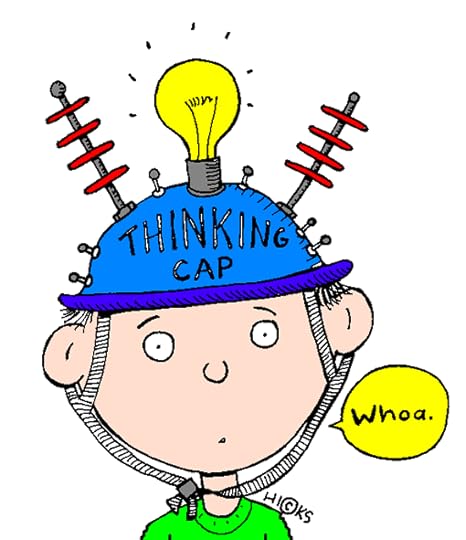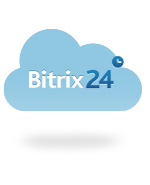Jacob Morgan's Blog, page 36
November 15, 2013
Five Trends Shaping the Future of Work
 When it comes to the future of work there are a few key trends which business leaders need to pay attention to. Understanding these trends will allow organizations to better prepare and adapt to the changes which are impacting the way we work. These five trends are: 1) changing behaviors which are being shaped by social media entering the enterprise 2) new collaborative technologies 3) a shift to the “cloud” 4) millennials soon becoming the majority workforce and 5) mobility and “connecting to work.”
When it comes to the future of work there are a few key trends which business leaders need to pay attention to. Understanding these trends will allow organizations to better prepare and adapt to the changes which are impacting the way we work. These five trends are: 1) changing behaviors which are being shaped by social media entering the enterprise 2) new collaborative technologies 3) a shift to the “cloud” 4) millennials soon becoming the majority workforce and 5) mobility and “connecting to work.”
Behaviors shaped by social media entering the enterprise
Much of what we are seeing inside of our organizations as it relates to “social” collaboration is being fueled by what is happening in the consumer web. Technologies such as Facebook, Twitter, Linkedin, Foursquare and many others have given rise to more robust and business oriented counterparts such as Jive, Yammer, Chatter, and dozens of others. The technologies in the consumer web help encourage and support new behaviors such as creating communities, being open and transparent, sharing information and ideas, easily being able to find people and information, and collaboration. These behaviors (and technologies) are now making their way into our organizations and are helping shape the future of work.
New collaborative technologies
New collaborative technologies (some of which were mentioned above) are dramatically impacting the way we work and will work in the future. These technologies are now giving us the freedom and flexibility to work from anywhere, anytime, and on any device. Being able to find subject matter experts and connect with colleagues (known or unknown) across the globe is now a possibility that didn’t exist. Hierarchies are being flattened as virtually any employee can connect or communicate with anyone else at the company regardless of seniority and information is being opened up instead of being locked down. Systems are being connected and opportunities for business process improvement, customer experience, and overall efficiency improvement abound. These new technologies are also allowing simple actions to have big impacts, for example the CEO of a company “liking” or commenting on an idea that an employee might post publicly inside of the company. These same employees now have a voice within their organizations and have the ability to become leaders without having to be managers.
Shift to the “cloud”
Virtually every collaboration platform today has a cloud-based deployment option. This means that the barrier to entry is virtually zero. Business units no longer need to wait for corporate approval or the blessing of IT to make investments in these areas. Anyone with a credit card and access to the internet now has the ability to deploy whatever technology best fits their needs. This is a huge shift inside of organizations which traditionally had to rely on IT to deploy any type of new technology, the costs used to be high and the deployments complicated.
Millennials as the majority workforce
By 2020 millennials are projected to be half of the entire U.S. workforce. These are people who grew up with the many social media platforms that we use today. They are used to being connected, collaborative, and mobile. Millenials are used to sharing with each other, communicating through social platforms, working from anywhere, having a voice, and learning about what interests them. Most organizations today are struggling to adapt to this changing workforce as baby boomers are starting to make their way out. This is a big factor shaping the future of work as organizations seeking to attract and retain top talent are going to need to adapt.
Mobility and “Connecting to work”
Mobility is not just about being able to work and get access to people and information from a mobile device. It’s also about being a mobile worker which means you can work from anywhere, anytime, and on any device. The idea of “connecting to work” is become more prevalent within organizations as they are starting to allow for more flexible work environments. With an internet connection you can now access everything you need to get your job done. The notion of having to work 9-5 and commuting to an office is dead.
The smart and progressive organizations around the world have already been making the necessary investments to adapt to these changes. Some have been doing so for several years already whereas many organizations are still trying to educate themselves about what these changes mean. Regardless of where you are in this spectrum the future of work is something that you must plan for and adapt to if you want your organization to continue to exist.
 Send to Kindle
Send to Kindle




November 7, 2013
Should Employees Have Freedom at Work?
I just finished giving a keynote presentation on the future of work to a room of 200+ telecommunications executives and business leaders at the Glenn Eagles Resort in Scotland. After my session someone stood up and asked a very interesting question about employees having too much freedom. His basic question (slightly paraphrased) was: “there are a lot of employees that are already screwing around at work and doing nothing when they should be working, why do we want to give them even more freedom?”
The question got a lot of laughter from the audience, just imagine it being asked in a heavy English accent with a wee bit of profanity behind it.
I’m sure you can guess what I told him. Yes, employees need freedom at work. If you are hiring employees who are literally taking advantage of you then they are not good employees and they shouldn’t be working for you. However, employees will always take breaks and mess around a bit which is fine and normal. We are so used to having employees work like drones that we forgot what it’s like to have people be…people. Even if you force employees to come to the office they can still “not-work” while they are there. They can mess around on other websites, go hang out with co-workers, or do whatever else they want to do to avoid working. Just because you see them and just because they come into the office doesn’t make them more productive or more efficient. However, studies consistently show that employees given the freedom to work how they want are more productive.
If you want to attract and retain top talent, employee freedom and workplace flexibility is something that many value more than pay. If however, your hiring employees who are are screwing around and taking advantage of you, then that’s a whole other problem.
If you don’t want to offer workplace flexibility then don’t, nobody is forcing you, just don’t be surprised if nobody wants to work there.
 Send to Kindle
Send to Kindle




November 4, 2013
Old Management Ideas and Practices That Won’t Die
You can’t talk about the future of work without referring to many of the old and outdated management practices that are still the standard in most companies around the world. Oddly enough most of the people who created these management ideas and practices are now dead. What does it say about our companies and managers when we continue to build upon ideas, principles, and philosophies that are not relevant anymore? Management practices were created to be used during their present time during the then present condition. Much has changed in just the past 5-10 years so shouldn’t the way we manage and lead our companies change as well?
We are too comfortable with staying the course and keeping our heads above water. We innovate during catastrophes to bring us back to the way things used to be but we have a hard time innovating when things are going well. The companies of the future aren’t going to be focused on staying the course and keeping their heads above water, they are going to be focused on flying above the water.
We can’t build new companies or evolve existing ones until we question the ways they are led and managed. Outdated and obsolete management practices are all around us.
If it isn’t broken then why both fixing it? Let’s not reinvent the wheel
You have to come into the office from 9-5
You will get performance reviews once or twice a year
Must create weekly status reports
What are your favorite management practices that just won’t seem to die?
The good news it that this is all changing. Companies still implementing these are the companies barely keeping their heads above water, my advice to them…take a deep breath.
 Send to Kindle
Send to Kindle




October 30, 2013
The Want Generation Versus the Need Generation of Workers
Do you want to work at your company or do you need to work there? If you are a manager the same question goes to you, do your employees want to work there or do they need to work there?
The assumption over the past several decades has always been that employees needed to work for their current employers and thus they are expendable and can be treated as such. For the most part this has been true. Employees needed a paycheck, they had bills to pay and expenses to cover.
However, now we are seeing that employees are starting prioritize meaningful work over pay. They would rather have a job that they enjoy and earn less money at then have a job that they don’t enjoy but pays them more. This is a big shift which dramatically impacts how organizations hire and how they will attract and retain top talent. The “need” generation of workers is on their way out and is being replaced by a generation of “want” workers.
Organizations that will continue to exist and thrive are going to focus on how to get employees to WANT to work there instead of assuming that employees NEED to work there. The game has shifted and employees are not expendable the way they used to be. They are valuable assets, team members, and resources.
So when looking at your company ask yourself, do people WANT to work there or do people NEED to work there?
 Send to Kindle
Send to Kindle




October 28, 2013
Announcing New Book With Wiley Publishing
I’m very excited to announce that I just recently signed a contract with Wiley Publishing to work on my second book. There’s not title yet but I can tell you that the book will be focused on exploring how the world of work is changing and impacting everything we know about work today. My previous book, The Collaborative Organization, was a strategy guide on how to connect people and information but it was really for much more of a niche audience, specifically for business leaders or practitioners who are trying to build collaborative organizations themselves. The new book is going to have much broader appeal and will be relevant to anyone is currently employed or to anyone who is seeking employment. I will have much more information on this in the coming months as I progress with the actual content.
In the meantime, I’m grateful and excited to begin this journey and the goal is to have this book out in the stores just after summer 2014. I really appreciate all of your support and will be sharing much more during the writing process.
In the meantime, let the fun begin!
 Send to Kindle
Send to Kindle




October 24, 2013
Top 10 Tips to Stay Healthy During Business Travel (Conferences and Events)
 I travel a fair amount around the world, nothing too crazy but I’d say I average around 100k miles a year which is more than the average person. I’m also a bit of a health and fitness nut so when I travel to conferences or events I always try to stay healthy. Here are some tips which I hope you find useful and valuable:
I travel a fair amount around the world, nothing too crazy but I’d say I average around 100k miles a year which is more than the average person. I’m also a bit of a health and fitness nut so when I travel to conferences or events I always try to stay healthy. Here are some tips which I hope you find useful and valuable:
Don’t eat the conference/event food- Oftentimes event lunches or breakfasts consist of scrambled eggs which are typically made with oil and/or butter, fried bacon, and who knows what else. Lunches are usually comprised of sandwiches covered in mayo and salads dripping with dressing. The best thing you can do for yourself is to go to the restaurant and order yourself something healthy such as a chicken breast with asparagus. Even if you have to pay for it out-of-pocket it’s still worth it. Your body deserves better!
Ask for the healthy alternatives- Every time I eat at a restaurant for an event I make sure to give the waiter explicit instructions to put the dressing on the side, to steam the veggies instead of fry them, and I always ask for a healthy option. For example instead of mashed potatoes I might do a baked potato. Instead of getting the fish cooked in oil, I ask them to use no oil. When ordering breakfast I order egg whites and make sure to mention that they not cook the eggs in oil or butter.
Find the gym and use it- Typically the first thing I do every morning is go to the gym. I don’t schedule any calls or meetings in the mornings and unless there is an absolutely amazing speaker I ditch the first hour or so to go workout. If you don’t do it in the morning chances are that you won’t do it at all. The gym is your friend. Attending sessions can be great but your personal health should always be #1.
Get a fitness tracker- I have a Fitbit that I travel with everywhere I go. I always make sure to set a certain goal for myself and I make sure to hit it. A goal might be 10-15 thousand steps for the day which amounts to 5-7 miles.
Bring protein bars- I always travel with my stash of protein bars. I personally use Quest bars because they are low in sugar, low in fat, high in protein and high in fiber. Most people just eat any kind of protein bar assuming it’s good for them without reading the labels. Avoid the overly sugary and fatty bars, you might as well just eat a doughnut. These bars come in handy quite a bit when you’re hungry and need something quick in between meals.
Bring vitamins- I bring a multi-vitamin and fish-oil tablets which I take every single day. I portion them out before my trip and bring them along in little zip-lock bags. These help make sure you are getting the daily vitamins and nutrients your body needs.
Skip dessert- Oftentimes dinners are either paid for or catered at conferences which means the dessert just gets placed in front of you. Have them take it away. I’m writing this from the Ritz Carlton in Dana Point and when I checked in I had a plate of various chocolates waiting for me. I took a tiny bite and then got rid of them. I don’t want them near me or in my room. Out of sight out of mind!
Walk when you can- Whether you are the airport or in the hotel, try to avoid escalators and elevators. You have legs, use them and don’t be lazy. Walk when and where you can. You will be happy you did!
Drink lots of water- I know that open bar can be tempting. I mean who doesn’t like free drinks right? Well, stop it! If you want a drink go grab a water or a Pelegrino with some lemon. Just because there’s an open bar doesn’t mean you need to take advantage of it. Sure, a glass or red wine every other night might be ok but don’t go crazy on the drinks. Drinking excessive amounts will make you want to eat more and will also make sure you that you don’t wake up fresh the next morning ready to hit the gym. Not to mention lots of drinking is just plain bad for you.
Avoid snacking unless it’s a healthy snack- For some reason every conference and event I attend thinks it’s a good idea to have brownies and cookies as a good snack. They stack mounds of these pastries and provide coffee to go with them. These are death snacks and should be avoided at all costs. If you want a snack have a protein bar, eat some almonds, grab some low-fat yogurt with honey, or just go eat a normal meal. But whatever you do, stay away from the snacks!
Do you have any other tips to add to this list? Traveling can make being healthy quite a challenge but it doesn’t have to be. Hopefully these ten tips will inspire you and encourage you to eat healthier during business travel (and just in general).
 Send to Kindle
Send to Kindle




October 21, 2013
Companies Have to Move Faster
Companies move very slowly but people don’t. It can take a company 1-2 years to make a decision, it takes a person a few minutes at most.
When it comes to collaboration and the future of work the snail-like pace of companies (especially large ones) to invest in technologies and strategies to support their future is going to kill them. There’s no reason why it should take a company 2 years to deploy a collaboration platform and there’s no reason why it should take 1 year to build a strategy.
It’s the classic David and Goliath situation that Malcom Gladwell talks about in his new book. We always assumed that it was Goliath who had the advantage when the reality is that it was David.
“Large company” no longer means better company and it no longer means that the company will be successful in the future. We’ve seen countless large enterprises topple over recently and I fully expect that this trend will continue unless big changes are made.
The future of work is about moving faster and you move faster by connecting your people and information.
 Send to Kindle
Send to Kindle




October 16, 2013
Things to Think About for the Future of Work
 Here is a random mix of thoughts and ideas that you can/should be thinking about when it comes to the future of work and collaboration.
Here is a random mix of thoughts and ideas that you can/should be thinking about when it comes to the future of work and collaboration.
Just because we can always be connected doesn’t mean we should be, we need to time away from screens to spend with family and friends.
If your company doesn’t think for and plan for the future of work then your company has not future.
Always put your strategy before the technology, doing so will help you save a lot of money in the long-run.
Email is no longer the most effective way to communicate or collaborate with employees.
Millennials are going to be the majority workforce by 2020, is your organization adapting? How would someone just graduating from college work at your company, and more importantly, would they want to?
Cubicles and offices are no longer mandatory, they are optional.
Investing in collaboration and giving your employees a voice is a crucial factor for attracting and retaining top talent.
Not every organization is on-board with how the world of work of changing, if you are stuck and frustrated and can seem to make an impact, there is nothing wrong with leaving and working somewhere where your efforts are appreciated.
Doing meaningful work where employees are happy and engaged is becoming more important than monetary incentives.
There are many collaboration technologies out there, many of them have free(mium) version of their product that you can test out, play around with a few of them and see what you like.
Creating a collaborative organization isn’t an option it’s THE option.
Everyone always says pay attention to the voice of the customer, what about the voice of the employee?
The future of work is about “connecting to work.”
Managers are shifting from command and control, to following from the front, that is removing obstacles from the paths of employees and inspiring them vs scaring them.
Behavior is just as important as technology but both go hand in hand and work with each other to make change. One cannot effectively work without the other.
Employees are cogs, work is a struggle, and managers are slave-drivers. These are actual synonyms from the dictionary. In other words, work sucks. This is how our companies were built so we have a lot of work to do to help change this mindset.
Evolving your organization is a never-changing process, it’s an ongoing journey.
Collaboration tools cannot be blamed for the success or failure of collaboration. Tools are just that, tools. Employees need to actually use the tools for goals to be achieved.
This is a very exciting yet challenging time for companies around the world, how will your company adapt to the future of work?
 Send to Kindle
Send to Kindle




October 11, 2013
Friday Vendor Roundup: Bloomfire, Liferay, Bitrix24, & Confluence
Every Friday I’m going to attempt to summarize any relevant news in the future of work/collaboration space. I’ll provide the name of the vendor, a short summary of what the announcement or piece of news is with a link to the original, and finally a short POV. I can’t cover every single thing that comes out but I will do my best to provide as much relevant content as I can. If you have something you think I should include then please send it over and I will decide if it’s something I can add. Ideally I’d also like to see the product which means we can schedule a demo or just get me access so that I can take a look at it.
 Bloomfire adds new features
Bloomfire adds new features
Yesterday Bloomfire, a knowledge sharing platform, announced that they are rolling out a few new features which which include:
Your Feed- delivers content and answers that are automatically curated based on an individual’s interactions with people and contributions.
Recent- includes the most recent content and answers.
Popular- displays the most viewed content and answers.
Groups- makes it easier for people to connect around a central topic or theme
My POV
The items they added are clearly essential for knowledge sharing and are features which other vendors have offered for quite some time now so I’m glad to see Bloomfire getting up to speed. While Bloomfire plays in similar circles as Jive, Yammer, and the like; their product is much for focused on the knowledge side of things instead of the social collaboration side of things so it’s a much more specific use case. The company appears to be growing and has a good customer base so it will be interesting to see where they are in the next year or so.
 Liferay announces version 2.1 EE
Liferay announces version 2.1 EE
Liferay is an open source collaboration platform and they just released an update version of their product which includes:
Interactive Activity feed – Respond to microblogs, comment on documents and blogs, and easily see what others are discussing, right from the Activity feed.
Social Office Announcements – Important announcements can now be viewed directly from the Dashboard. Announcements on sites now default to site scoped Announcements, to provide better context.
User Bar – Easily navigate to your Social Office sites and personal pages from anywhere within the portal.
My POV
Again, crucial features to have but they are very late to the game as most vendors have been offering these things for…years. Open source enterprise collaboration products aren’t getting that good of a reputation (from what I’m seeing) even though they can be quite powerful platforms. I do like the Liferay UI but as far as I’m concerned their recent update isn’t about being forward thinking or innovative, it’s about keeping their head above water.
 Bitrix24 updates desktop app to include voice and video calls
Bitrix24 updates desktop app to include voice and video calls
In the new version of their desktop app, users can now leverage the capabilities of voice and video calls without having to open up a web browser. They also added the ability to customize notification settings for the app as well.
Honestly? This is pretty darn cool! First of all I can’t understand why so many vendors choose not to develop desktop apps for their products to begin with but the new Bitrix24 app might just be one of the better desktop collaboration apps out there today. Personally, I find the ability to make calls (voice and video) from the desktop app to be extremely valuable. Bitrix nails it again!
 Confluence adds “questions”
Confluence adds “questions”
Atlassian’s Confluence recently added a new feature called “questions” which allows employees to ask questions internally and then share those answers with other employees. The question and answers are located in a central place for other to locate/read later.
My POV
Think “Linkedin answers” or Quora, that’s essentially what this new product is. ”Questions” has a lot of cool functionality such as the ability to add images, macros, code snippets, and other things. Answers can also be voted up and down and questions can be sorted by topic. Additionally you can connect with and find experts based on their responses. I really like the new updates to the product which are making Confluence a very serious player in the enterprise collaboration space.
 Send to Kindle
Send to Kindle




October 7, 2013
The Best Ways to Educate Employees About the Future of Work and Collaboration

We recently released our report on the Future of Work. One of the things we explored was the best ways to educate employees on the value and benefit of collaboration platforms within organizations. Employee adoption is consistently ranked as one of the top challenges when it comes deploying collaborative technologies and strategies and education and training is the best way to help overcome that.
From the hundreds of responses that we received, workshops (61%), videos and content on demand such as webinars (56%), and lunch and learns (47%) seem to be popular and effective ways to educate and train employees.
Workshops
My team and I have done many workshops for companies around the world and I can safely say that they do quite well. Not only do workshops provide an opportunity for employees to learn but they also provide a safe place for them to share their frustrations, hesitations, and general impressions about collaboration and future of work initiatives. It’s great for senior level leaders to hear directly from employees and vice versa. Sadly this type of back and fourth communication is rare so when it happens, very interesting things can be learned and uncovered! These workshops are relatively easy to do and can be anywhere from a few hours to a few days (broken up with a few hours each day). They can also be broken up by seniority level, department, or any other way you wish. I find that workshops are also a great way to help kick-start organizations to help them speed things up a little bit and get employees excited and inspired.
On-demand content
Again, my team and I have done many of these on-demand pieces of content (with lots more coming soon!) and they are also very effective, or at least they can be. With on-demand content people don’t just want to be educated they want to be entertained. This means that you might have amazing information to share but if it’s delivered in a poor way then nobody will be able to connect with it. The great part of on-demand content is that employees can access it when they want to not when they have to. Topics can range from general trends which are helping shape the future of work to specific walk-through’s of a collaboration technology to strategic or tactical tips and best practices.
Lunch and learns
I’m a big fan of lunch and learns and many companies do these once a month or even once a week, typically on a Friday. It involves having either a guest speaker or internal subject matter expert present on a particular topic while employees get to have lunch and interact with each other. Typically lunches are provided by the company so it makes for a fun and sociable event. They can last an hour or more and can be done in a series where a new topic is subsequently covered at each event.
There are also other valuable ways to educate and train employees which organizations can consider as well, these include:
Buying copies of a book for employees to read
Sharing research, use cases, or best practices
Having speakers from other organizations come in and share their stories and experiences
Reverse mentoring (where one employee who is a subject matter expert mentors someone who isn’t, regardless of seniority level)
One-on-one sessions
What have you done at your organization that has shown to be an effective way to educate and train employees around things related to the future of work and collaboration (or other)?
 Send to Kindle
Send to Kindle







